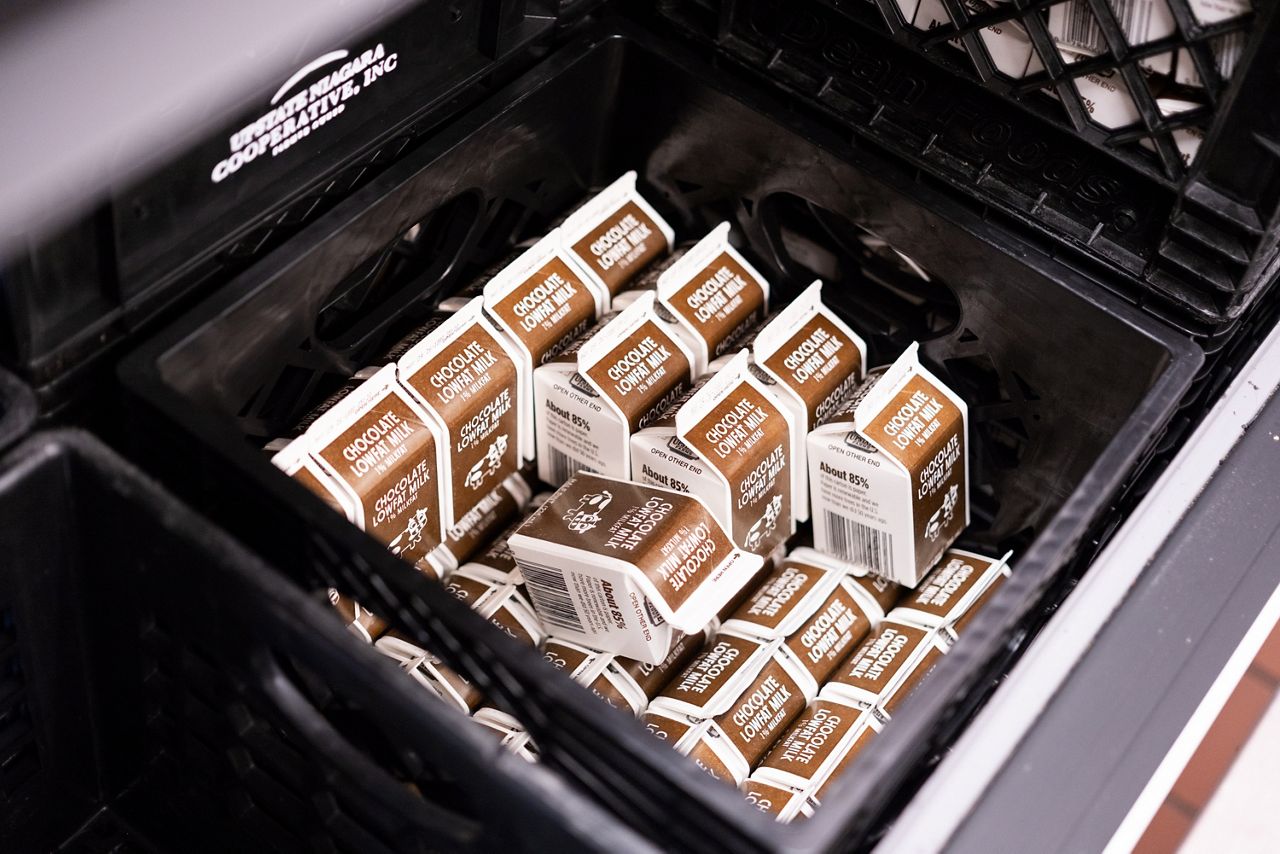The U.S. Department of Agriculture has finalized changes to school meal programs, but some schools have concerns about how manufacturers will adjust to the updated guidelines.
Rachel Viens, director food and nutrition services at the Syracuse City School District, said the market for food has been chaotic with price changes and product availability.
“If they’re making these changes with regulations, these massive food companies have to change the recipes and that’s going to be a real struggle,” Viens said.
The new federal regulations put in place last month will gradually come into effect between fall 2025 to fall 2027 to give schools and manufacturers time to adjust.

“If we were to go ahead and implement these today, it might be a bit of a struggle,” Viens said. “There’s a lot of products that are being provided to the kids that are already pretty stringent, but this will up the ante a little bit for us to be checking what’s available on the market.”
The major changes include limiting added sugars and sodium by dropping the weekly limit for both.
Additionally, schools can require unprocessed agricultural products to be produced locally and starting in fall 2025, and there will be limits on the percentage of non-domestic produced foods with the goal of using more local foods.
“It really just cut some red tape so we can do more business with our local community,” Viens said.

The Syracuse City School District makes about 40% of their food from scratch or semi-scratch and are working to increase that to 50%.
Tracy Sullivan, the kitchen manager for Sandy Creek Central School District, said they do about 75% scratch cooking and try to source as much as possible from local farms.
“We went to scratch cooking so we could control the sodium and the sugar that we add to the food, so I don’t necessarily worry about that too much because I know I’m not putting it in there,” Sullivan said.
Flavored milk, yogurt and cereal are among the high-sugar products that will be limited in the first phase of lowering added sugars. Flavored milk has to be below 10 grams of sugar.
“I’m sure that manufacturers are going to find a way to do that because we can’t use it if they don’t,” Sullivan said.

According to the press release from the USDA, 37 milk processors across the nation, which account for 90% of school milk, say they can abide by the guidelines.
The flavored milk that schools provide children is different than the milk consumers purchase in the store, said Emily Tills, a registered dietician.
“It’s actually formulated to be lower in added sugar,” Tills said. “With yogurt, if we can offer in the school districts more of the lower sugar options or, maybe a plain option and offering to add more fruits to it, we can get away from some of those added sugars.”

High amounts of added sugar contribute to the growing population of people with diabetes and high sodium can cause other health problems, she said.
“Many of our foods are highly processed so it can raise hypertension and high blood pressure levels as well as cause other heart relates issues, which puts us at risk for other problems down the line,” Tills said.
Focusing on more scratch offerings, fresh foods, and less highly processed products is a better option, she said. Additionally, using locally sources foods has other benefits.
“The longer it travels the longer that it is between pulling it out of the ground and us eating it. The nutrition quality changes, and it can really decrease,” Tills said.



